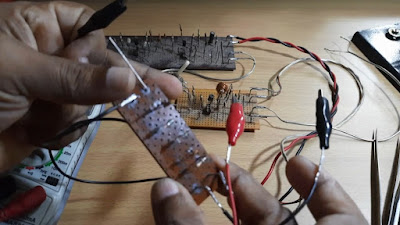A varactor is a type of diode that presents with a junction capacitance when a reverse biased voltage is applied across its terminals. This diode is also known as the varicap diode, variable capacitor diode or a tuning diode. The varactor diode is a special type of PN junction diode whose internal capacitance can be varied by the application of a reverse biased voltage.
Properties of a Varactor Diode
It is operated in the reverse biased condition. It is a voltage dependent variable capacitor.
Working Principle of a Varactor Diode
The varactor diode consists of two terminals, the anode which acts as the positive terminal and the cathode, which acts as the negative terminal. The P and the N regions act as the parallel plates of the capacitor and the region between the P and the N regions act as the dielectric.
The formula for finding out the capacitance in the varactor diode is
C = eA/d
Where epsilon (e) is the permittivity of the dielectric, A is the area of the parallel plates and d is the distance between the parallel plates.
When a reverse biased voltage is applied to a varactor diode, there will be an electric field created at the N and the P regions. The electric field direction is from the positive to the negative. In the N region, the electrons that are negatively charged get attracted to the positive terminal of the battery and in the P region, the holes which are positively charged get attracted to the negative terminal of the battery.
As the applied voltage is increased, the depletion region thickness becomes increased and the junction capacitance is decreased. When the applied voltage is decreased, the depletion region thickness becomes decreased and the junction capacitance is increased.
This change in junction capacitance of the varactor will thereby cause a variation of capacitance to the circuit that is connected to it. The capacitance value of the varactor diode is measured in picofarads or PF.
Watch the Video: https://youtu.be/UOt-LnEseRg

































